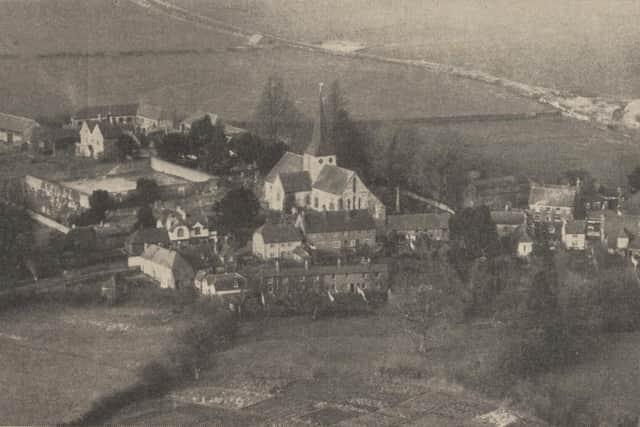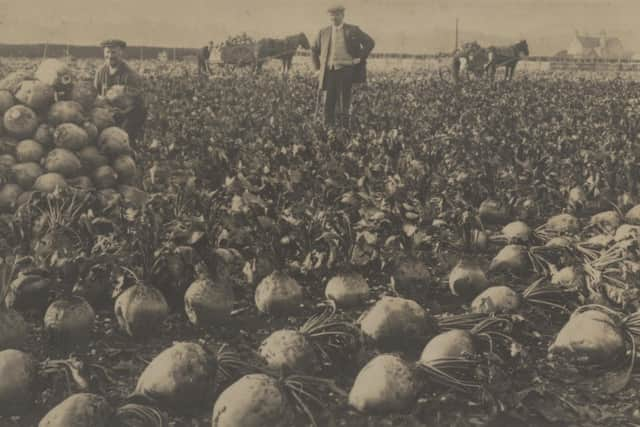Exploring the South Downs National Park and its history
and live on Freeview channel 276
National Parks are an internationally accepted way of protecting a nation’s finest landscapes and natural heritage, and to enable people to enjoy, understand and benefit from these environments.
After decades of campaigning and pressure from conservationists and leisure enthusiasts, the concept of National Parks was first raised in the National Parks and Access to Countryside Act of 1949, described as ‘the most exciting act of the post-war parliament’ by Lewis Silkin, minister for town and country planning.
Advertisement
Hide AdAdvertisement
Hide AdEarly campaigns for the establishment of National Parks by geographer Vaughan Cornish in 1929 included the South Downs and in 1947, politician Sir Arthur Hobhouse recommended the South Downs as one of 12 areas in the country to be designated. Although at this point the South Downs was not chosen, two areas were designated as Areas of Outstanding Natural Beauty (AONB), East Hampshire in 1962 and Sussex Downs in 1966. Decades later, in 2003, National Park status was proposed and after years of negotiation and further consultation, the National Park came into full operation on April 1, 2011, when the South Downs National Park Authority assumed statutory responsibility for the area.


The National Park covers the South Downs chalk ridge and rolling landscape of the Western Weald for 140km from Winchester to Eastbourne. The area includes the Racton Ruins, Cissbury Ring – the largest hillfort in Sussex, and Chanctonbury Ring near Steyning. Within the Chichester district, the towns and villages of Lavant, Stoughton, Singleton, East Dean, South Harting, Milland, Fernhurst, Northchapel, Petworth, Midhurst and Duncton all fall inside the National Park boundary.
The authority works with landowners, farmers, local wildlife trusts, local authorities and communities in pursuit of its purposes, which include conserving and enhancing the natural beauty, biodiversity and cultural heritage of the area.
Since the 1950s, agriculture has intensified, having consequences for the rich diversity of natural habitats that had evolved over centuries of traditional land management practices. One of the key priorities currently is nature recovery and last year the National Park launched its ReNature campaign to create an extra 13,000 hectares of land that is specifically managed for wildlife.
Advertisement
Hide AdAdvertisement
Hide AdArchaeological evidence from National Parks across Great Britain show human occupation spanning thousands of years, and the South Downs National Park is no different. The occupation of the South Downs since prehistoric times has left a rich archaeological and cultural legacy, along with many important more recent literary and artistic associations.


As well as being the planning authority for the National Park, the SDNPA works with landowners and partners to address a wide range of conservation and visitor management issues across the whole National Park. A common misconception is that the authority owns and manages all the land in the National Park. In fact, there are well over 500 landowners and the SDNPA works with them in pursuit of its statutory purposes, as well as a duty to seek to foster the social and economic wellbeing of the local communities within the National Park. Last year, the authority became the owners of Seven Sisters Country Park, at the eastern end of the National Park, and is currently investing £2million to help create a world-class visitor experience.
The South Downs has an extensive network of rights of way with 4,000km of footpaths and bridleways, including the South Downs Way, a 160km National Trail that follows the old routes and drove ways along the ridges of the chalk escarpment. Rangers and volunteers help to care for these sites and rights of way, working in partnership with landowners, local authorities and local communities.
There have been a range of partnerships over the past decade benefiting both biodiversity and cultural heritage. In 2015, the SDNPA helped to lead a community archaeology project to map stories of the South Downs woodland. In July 2016, an aerial scanning project using LiDAR laser scanning technology revealed a Roman road and field system in a forested area of the South Downs. The project was supported by the National Lottery Heritage Fund. Another lottery-backed partnership project, Heathlands Reunited, has helped to protect 41 rare lowland heaths across the National Park, helping to conserve rare species such as the sand lizard and natterjack toad.
Advertisement
Hide AdAdvertisement
Hide AdIn May 2016, the South Downs became an International Dark Sky Reserve and every February, the SDNPA hosts an annual Dark Skies Festival, offering stargazing events across the South Downs. The Moore’s Reserve, named after the late Sir Patrick Moore, who lived in Selsey, offers some fantastic stargazing opportunities, including at Bignor Hill, one of the darkest locations in the reserve. The hilltop offers extensive views of the night sky in all directions and even offers wonderful views of the Milky Way in late summer and mid-winter. As well as being beautiful to look at, dark skies are also very important for nocturnal and crepuscular wildlife that rely on the change from day into night and visa versa.
To find out more about the SDNPA and its work, visit www.southdowns.gov.uk